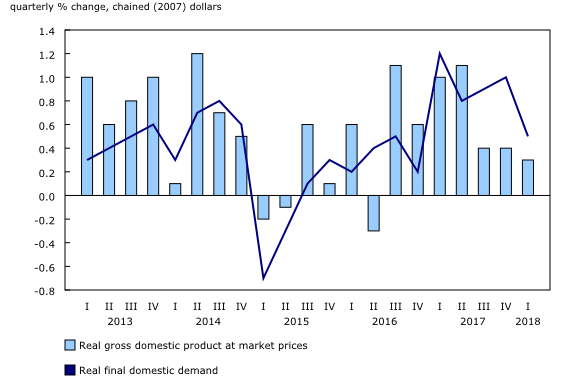Real Gross Domestic Product Growth (Source: Statistics Canada)

The slower growth was driven by by a deceleration in household spending, lower exports of non-energy products and a decline in housing investment (-1.9%). The impact of changing household spending is indeed a factor in the slowdown and may be tied to the recent increase in interest rates as well as other factors such as the rise in gasoline prices and rents. According to Statistics Canada: "investment in housing fell 1.9% in the first quarter, the largest decline since the first quarter of 2009, due to a drop in ownership transfer costs (-13.5%). Lower resale activity coincided with new mortgage stress measures introduced nationwide in January...Household final consumption expenditure decelerated for a third consecutive quarter, slowing to 0.3% in the first quarter."
The sustainability of an economy led by consumer spending and housing may finally be coming into question. How do things look going down the road? Well, FocusEconomics June 2018 Consensus Forecast still has Canada's real GDP growing at 2.2 percent annually this year with a decline to 1.9 percent in 2019 and 1.8 percent in 2020. Given an annualized growth rate of 1.3 percent in the first quarter of 2018, we have a lot of ground to make up to reach 2.2 percent.The United States meanwhile is projected at 2.8, 2.4 and 2 percent for the same years. Normally, when the United States does well so do as a result of our exports to them we but that traditional link has been under increasing stress given a more protectionist US economy. Today's news that the United States may be going ahead with tariffs on Canadian aluminum and steel will not help matters much.